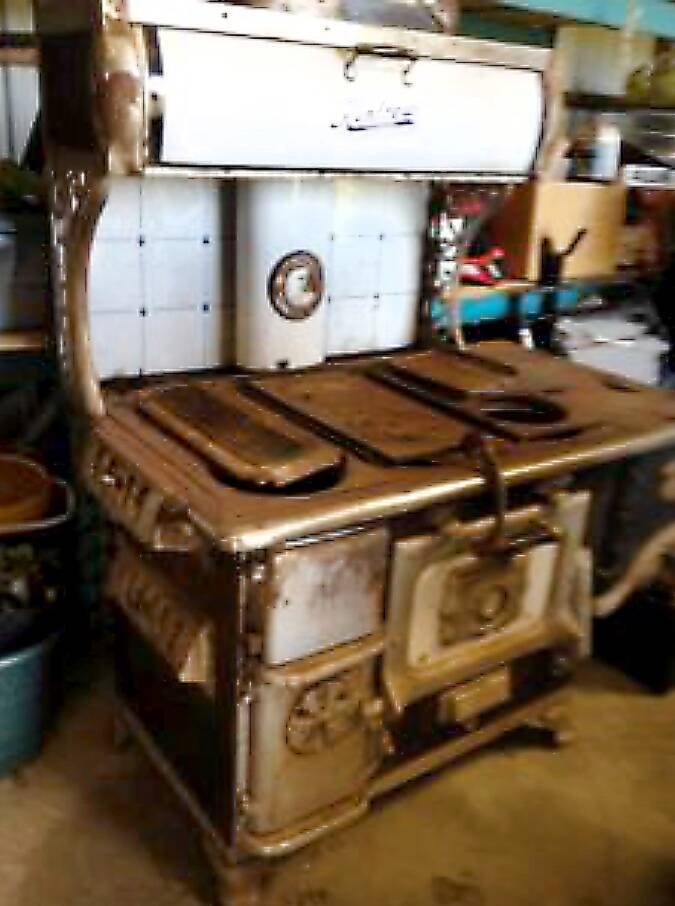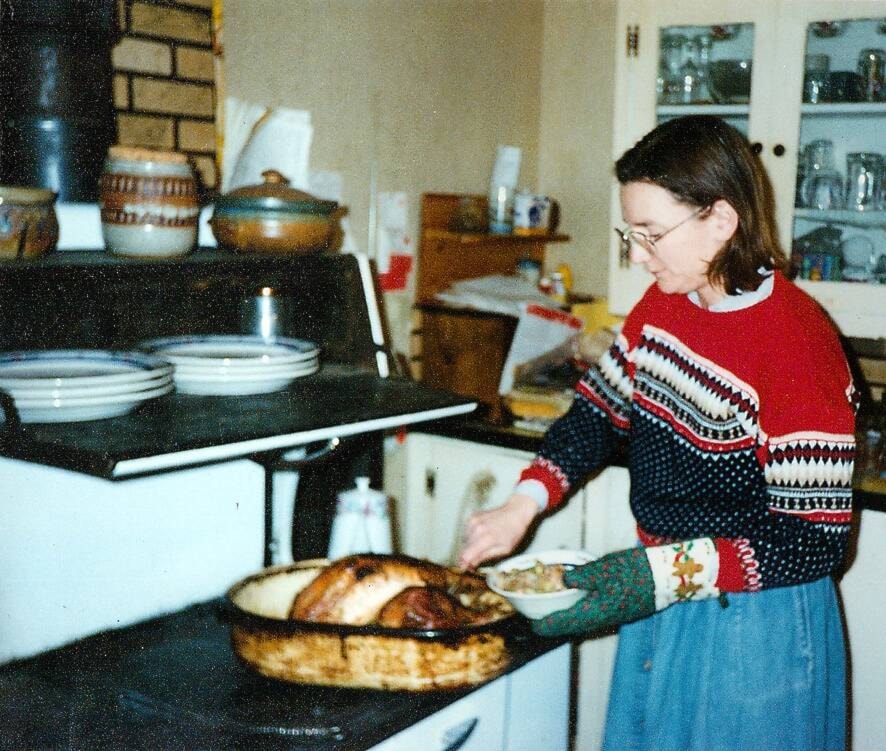By Eleanor Deckert
When I arrived in the North Thompson Valley in 1978, I was a newlywed and eager to begin the “Back-to-the-Land” lifestyle. I had been dreaming about this since Grade 3 when my teacher read aloud Laura Ingalls Wilder’s Little House on the Prairie.
For the first four months, I worked as a waitress while my husband built our tiny log cabin. When we were ready to move in, I had a lot to learn. Most importantly: how to operate the handsome Moffat wood cookstove.
At first, I could see only a confusion of black lids and shiny chrome knobs. The massive cube of the cast iron body and the tall, cylindrical chimney seemed ominous.
Each feature had mysterious powers I did not know how to control. How am I going to govern a blazing fire inside my house?
One by one I began to see the purpose and cleverness of the four main parts: stove top, oven, warming oven and water tank.
The door to the firebox was on the left side. As the fire burns, the ashes fall through a grate into the metal box below. When the lower door was opened and the metal ash box pulled out, the corners could be scraped bare with the little hoe-like tool.
The stove top was easy to understand. But why six lids? Pots and pans must be moved to find the ideal temperature to sizzle, simmer, boil or melt. A lid can be removed and a cast-iron frying pan placed in the empty hole, with the fire tickling the bottom to provide heat.
The oven was harder to comprehend. Hot air rises. How will a fire over on the left heat the oven over on the right? When I open the chrome-decorated oven door, I can’t figure it out. All I see is an empty metal box. By lifting lids and opening doors I uncover the mysterious inner workings.
But first I needed to understand one basic fact.
Fire needs air. Open-air vents allow the wood to burn hotter and more quickly. Closing them slows the fire’s heat. There are three places to open and close to control the air.
First and most obvious, the sliding knob on the left wall of the stove, right beside the firebox, opens several windows. Best to start a fire with these open wide, then reduce to a sliver so the fire will maintain a steady heat, and shut them all the way to make the fire last longer.
The second air control is the chimney damper. This chrome spiral-wire knob is above the stove, just within reach.
When the fire is starting, this is open to allow the hot air and smoke to rise unobstructed. When turned, a flat, round disc inside the chimney closes. This slows the smoke, choking the fire, slowing combustion, making the fire last longer.
The third control is for the oven. It is harder to understand at first. On the back of the stove, under the cooking surface, where the chimney meets the stove, there is a long, rectangular sliding door. I can see what it does when I lift the lid away and watch the opening to the chimney slide open and closed.
I had to think of the fire as something flexible. When the chimney control is open, the fire’s heat and smoke go directly from the fire box straight up the chimney. But when the stove is hot and the smoke is drawing upwards, the slider can be closed. This forces the heat and smoke to wrap around the oven, seeking the passageway across the top, down to the right, wrapping underneath and then behind the oven and at last, up the chimney.
This amazingly clever design heats the oven to the perfect baking temperature.
At about shoulder height, the chimney passes through the warming oven. It is so civilized. Imagine this: after a winter’s night with the kitchen fire gone out, warm porridge, scrambled eggs, toast or pancakes will lose their heat immediately if served on chilly bowls or plates.
While the meal is being prepared, the cook places the serving dishes in the warming oven, serving the food directly onto warm dishes. The meal can be enjoyed and early morning hands holding each bowl find comfort.
That copper box along the right side of the stove is the water tank. After a meal, hot water is ready for dishes. Before bedtime, warm bath water is ready.
In this “Back-to-Basics” lifestyle, one last detail is a luxury. Above the firebox is a little shelf for my teapot! Ready at the ideal temperature, I will be able to pause mid-morning and enjoy a second cup.
After a little trial and error I learned to prepare granola and muffins, cookies and pies, bread and biscuits, baked beans and cornbread, casseroles and gingerbread all toasted and fragrant coming from that Moffat wood cook stove oven.
I will never forget the lessons that wood cookstoves taught me. It eventually was buried in a landslide – but that’s a story for another day.
Do you have a comment about this story? email:
editor@wltribune.com
Like us on Facebook and follow us on Twitter.

